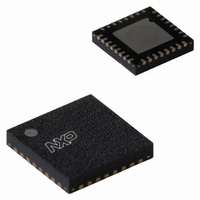SC16IS752IBS,151 NXP Semiconductors, SC16IS752IBS,151 Datasheet - Page 36

SC16IS752IBS,151
Manufacturer Part Number
SC16IS752IBS,151
Description
IC UART DUAL I2C/SPI 32-HVQFN
Manufacturer
NXP Semiconductors
Type
IrDA or RS- 232 or RS- 485r
Datasheet
1.SC16IS752IBS151.pdf
(59 pages)
Specifications of SC16IS752IBS,151
Number Of Channels
2, DUART
Package / Case
32-VFQFN Exposed Pad
Features
Low Current
Fifo's
64 Byte
Protocol
RS232, RS485
Voltage - Supply
2.5V, 3.3V
With Auto Flow Control
Yes
With Irda Encoder/decoder
Yes
With False Start Bit Detection
Yes
With Modem Control
Yes
Mounting Type
Surface Mount
Data Rate
5 Mbps
Supply Voltage (max)
3.6 V
Supply Voltage (min)
2.3 V
Supply Current
6 mA
Maximum Operating Temperature
+ 95 C
Minimum Operating Temperature
- 40 C
Mounting Style
SMD/SMT
Operating Supply Voltage
2.5 V or 3.3 V
Lead Free Status / RoHS Status
Lead free / RoHS Compliant
For Use With
568-4000 - DEMO BOARD SPI/I2C TO DUAL UART568-3510 - DEMO BOARD SPI/I2C TO UART
Lead Free Status / Rohs Status
Lead free / RoHS Compliant
Other names
568-2236
935279288151
SC16IS752IBS-S
935279288151
SC16IS752IBS-S
NXP Semiconductors
SC16IS752_SC16IS762_7
Product data sheet
Fig 14. Data transfer on the I
Fig 15. Acknowledge on the I
SDA
SCL
condition
SCL from master
START
by transmitter
S
data output
data output
by receiver
MSB
A slave receiver must generate an acknowledge after the reception of each byte, and a
master must generate one after the reception of each byte clocked out of the slave
transmitter. When designing a system, it is necessary to take into account cases when
acknowledge is not received. This happens, for example, when the addressed device is
busy in a real-time operation. In such a case the master, after an appropriate ‘time-out’,
should abort the transfer by generating a STOP condition, allowing other transfers to take
place. These ‘other transfers’ could be initiated by other masters in a multimaster system,
or by this same master.
There are two exceptions to the ‘acknowledge after every byte’ rule. The first occurs when
a master is a receiver: it must signal an end of data to the transmitter by not signalling an
acknowledge on the last byte that has been clocked out of the slave. The acknowledge
related clock generated by the master should still take place, but the SDA line will not be
pulled down. In order to indicate that this is an active and intentional lack of
acknowledgement, we shall term this special condition as a ‘negative acknowledge’.
The second exception is that a slave will send a negative acknowledge when it can no
longer accept additional data bytes. This occurs after an attempted transfer that cannot be
accepted.
0
condition
START
S
1
2
2
C-bus
C-bus
interrupt within receiver
0
6
byte complete,
Dual UART with I
Rev. 07 — 19 May 2008
1
7
ACK
8
acknowledgement signal
from receiver
6
7
2
0
SC16IS752/SC16IS762
C-bus/SPI interface, 64-byte FIFOs, IrDA SIR
clock line held LOW
while interrupt is serviced
8
1
002aab013
2 to 7
transmitter stays off of the bus
during the acknowledge clock
acknowledgement signal
from receiver
ACK
8
© NXP B.V. 2008. All rights reserved.
condition
STOP
P
002aab012
36 of 59















